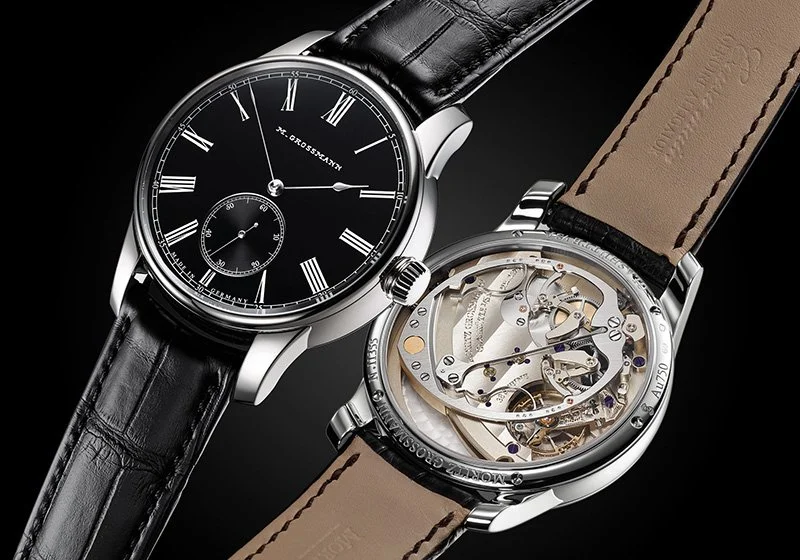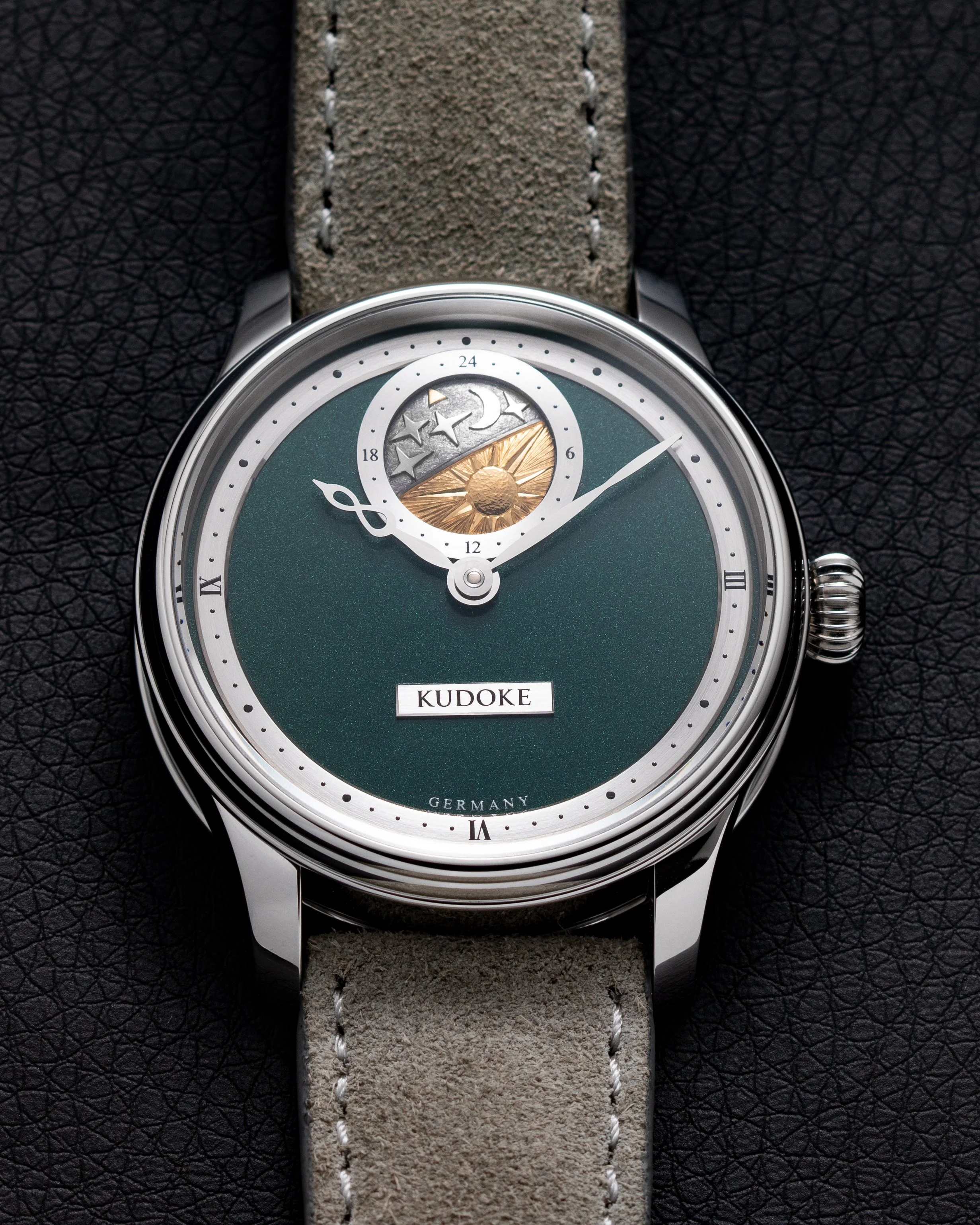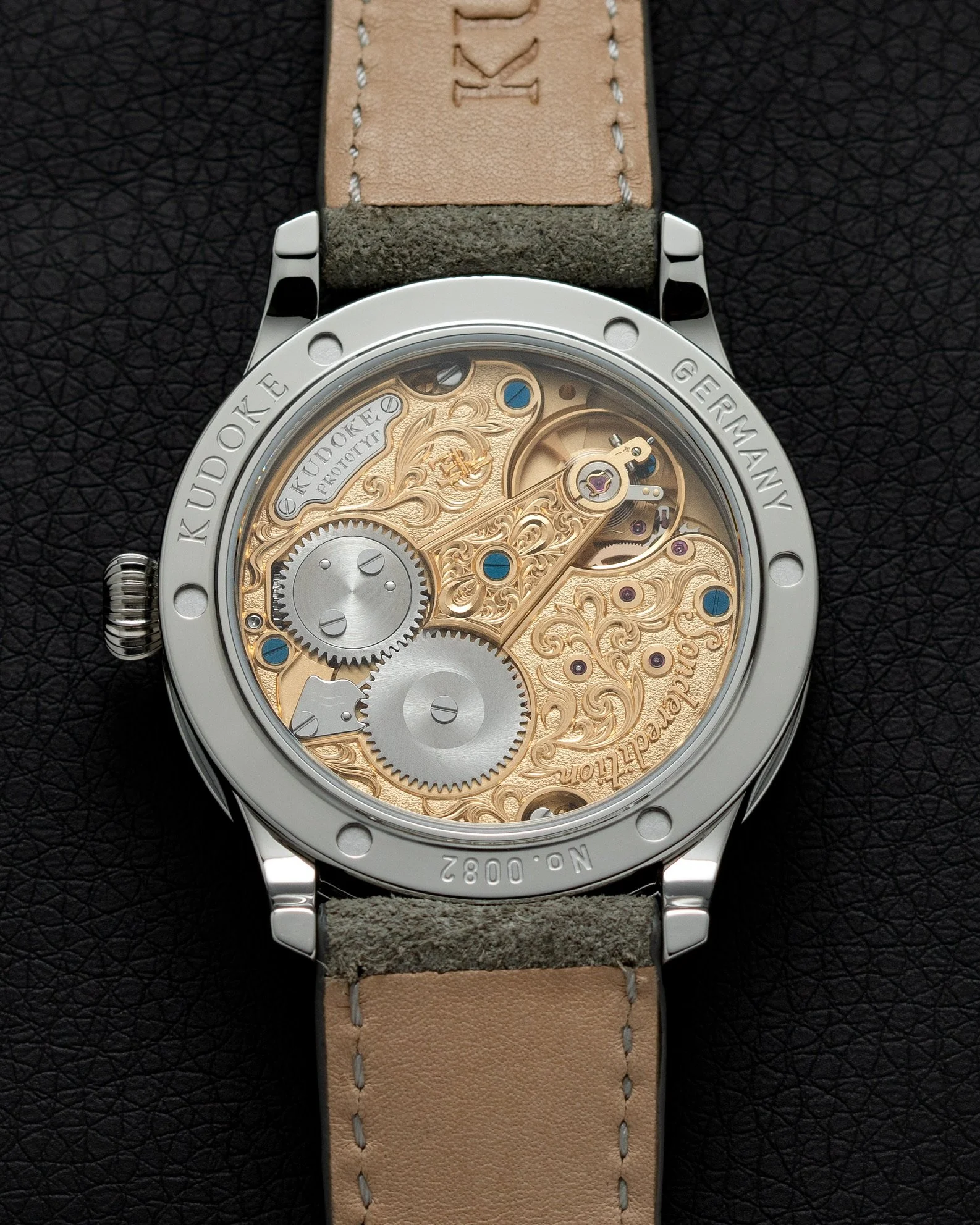What makes German watchmaking German?
The contemporary philosopher Slavoj Žižek has a comical anecdote on the relationship between ideology and architecture, all framed through the lens of toilets. The French, English, and Germans all have their own design idiosyncrasies, reflecting an inner dimension of each culture’s deepest being. As he opens, “architecture … is the exemplary case of how ideology is at work precisely where you do not expect to find it.” While this is not the place to dive deep into the vulgar, comedic details of Žižek’s commentary, I wanted to pursue a similar line of thought in navigating how culture impacts watchmaking. More precisely, what makes German watches German and where is German watchmaking headed?
Fortunately, Esperluxe friends Christine Hutter at Moritz Grossmann as well as Ev and Stefan Kudoke from their eponymous brand lended a hand. As independent watchmakers and brands in Glashütte, the seat of historical and contemporary German watchmaking, both helped shed light on what the key characteristics are of German watchmaking and its future.
To dive directly into the topic, let’s begin with the basics.
The characteristics of German watchmaking
There are some emblems of German watchmaking, many of which readers will recognize from having seen Moritz Grossmann, Kudoke, or A. Lange & Söhne’s work. The “stereotype” of traditional German watchmaking revolves around these mechanical and aesthetic items:
German silver is used for movements more than rhodium-plated brass (common in Switzerland)
Widespread use of two-third or three-quarter base plates
Opening for the bridge is often large with two-third or three-quarter base plates, meaning bridges and balance cocks are often large. Often accentuated in the German movement architecture.
Swan neck regulator on the bridge
Decoration on the bridges and cocks is traditionally hand-engraving
External facing screws are often thermally blued
Gold chatons, often held in place by thermally blued screws
Lange hand-wound calibre L901.0
Many of these design elements and motifs are a holdover from the earliest form of fine German watchmaking established by Ferdinand Alfred Lange in Glashütte, founder of the eponymous A. Lange & Söhne. Renowned by the mid-19th century European elite for his pocket watch creations, these early Lange timepieces incorporated the three quarter base plate designs, as well as an oversized bridge with hand-engraving. Ultimately, this design language proliferated through Lange’s successors – watchmakers like Julius Assman, Ernst Kasiske, and of course, Moritz Grossmann.
Born again by the efforts of Christine Hutter, CEO and watchmaker, as well as her team at Moritz Grossman, she mentioned that “German watchmaking historically didn’t pursue the same thinness in movements as our Swiss counterparts.” As far as Glashütte was concerned, form always followed function and never the other way around. Stefan Kudoke, independent watchmaker and engraving specialist, mentioned “the design is mostly streamlined and minimalist, as you can see with new and old German brands from Junghans to Nomos to Lange.”
Set against the backdrop of Swiss watchmaking, often viewed as more stylized and innovative, things are changing now though. Both mentioned brands, Moritz Grossmann and Kudoke, have pushed to see the German tradition evolve in the 21st century.
Where German watchmaking is heading?
Though the core characteristics of German watchmaking are well established, let it be clear: the tradition doesn’t simply end here. Independent German watchmaking brands like Moritz Grossmann and Kudoke, as well as the large houses of A. Lange and Nomos, are very much ushering in the future.
Moritz Grossmann’s HAMATIC VINTAGE - both dial and movement side
One of the starkest examples of the fusion of historical German watchmaking with a modern twist is Moritz Grossman’s Hamatic Vintage timepieces. On the dial-side, the brand uses a very traditional method of friction plating. This process entails filling a dial blank’s engraved markers with lacquer and then baking it in a kiln. In the next step, an artisan applies a mixture of silver powder, salt, and cream of tartar to make a material that only adheres to the metal blank, not the lacquered markers. All excess lacquer, whatever jets out above the creamy dial, is sanded, polished, and a protective layer is applied to prevent degradation over time. Entirely done by hand, the end result is a beautiful mixture of matte and luster finishes that pay homage to the methods of old school watchmaking.
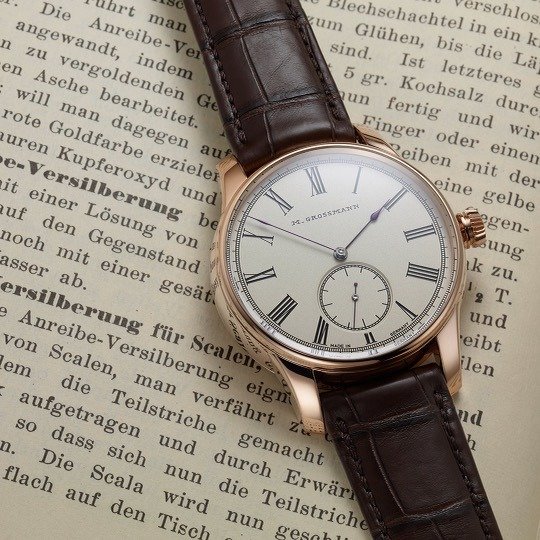
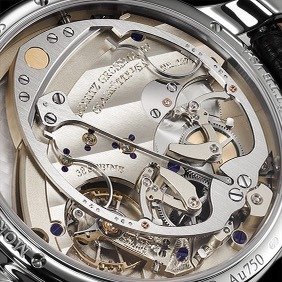
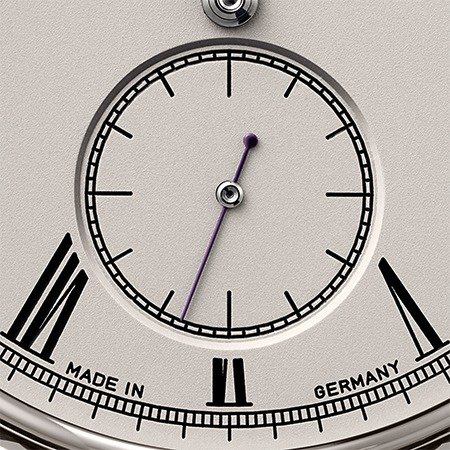
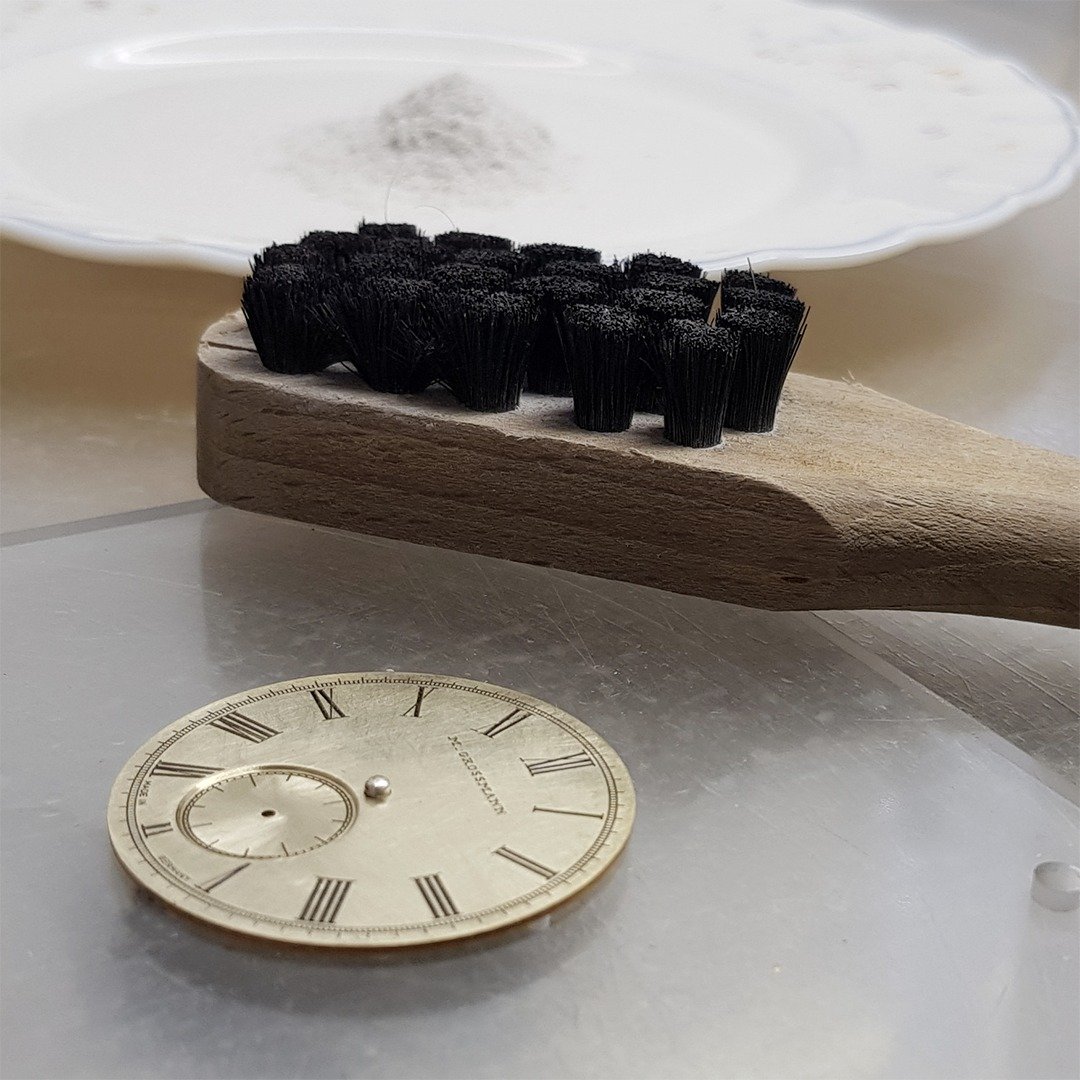
While the dial is as traditional as one can get in modern watchmaking, the movement side of this timepiece tells a story of much more contemporary “German” watchmaking. While the inspiration for the rotor (known as a hammer winding system) is drawn from 19th century pocket watches, you would never find something like the in-house calibre 106.0 in horological history books, in Germany or elsewhere.
Kudoke has shifted around tradition as well. While hand engraving was always used for decorative purposes on German movements, Kudoke is bringing the craft to the dial side with the Kudoke 2’s day-night indicator. These may appear to be slight shifts, but watchmaking is a game of millimeters, tight tolerances, and micro-mechanics. Even on the design side of things, design languages develop step by step over decades, across dozens of products, as is the case with Lange’s addition of lume.
Kudoke K2 Grüner Wald EsperLuxe Special Edition dial and movement side
Tracing the evolution of independent watchmaking with and against the grain
There’s a point to be made here about rebellion or resistance to these cultural norms. Specifically with the indies, these ideas around cultural dispositions and “normal” watchmaking in each nation leaves something concrete to push back against. It further contextualizes brands like MB&F and Urwerk in Switzerland, or Moritz Grossman’s Hamatic Vintage as strides toward a future with acknowledgement of the past.
Things are certainly changing – there are more and more opportunities to experiment, evolve, move in new directions. Independent brands (and the major houses) are certainly pushing the limits of their long standing national traditions. This is to say, the answer to our initial question – what makes German watches German? – is likely to differ in the future.
Footnote: For anyone interested in Žižek’s comedic insights into culture and ideology, referenced in the introduction paragraph, you can click here to watch the clip in all its hilarity.


